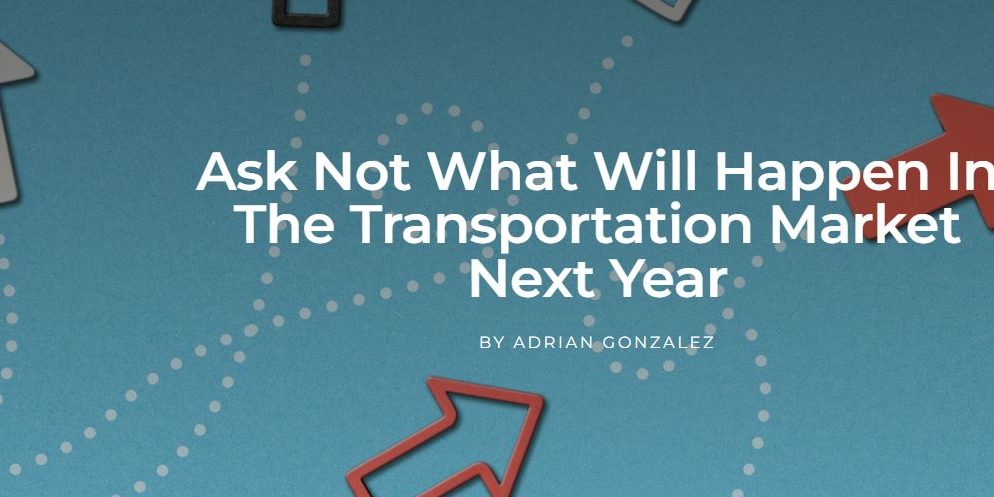What do you think is going to happen in the transportation market next year?
I get asked that question a lot this time of the year. It happened at dinner this past Monday night at the Deliver 2022 conference.
My answer is always the same: I have no idea.
Neither does anybody else, at least not with any certainty.
Benjamin Franklin, in a letter to Jean-Baptiste Le Roy in 1789, famously wrote that “In this world, nothing is certain except death and taxes.” Those two things we can be sure of; everything else, not so much.
Uncertainty, therefore, is not something new that transportation professionals have to deal with. It has always existed, and it is here to stay.
I understand why people ask the “What’s going to happen” question, but the sad truth is that the answer doesn’t really matter for many companies; they’ll be behind the eight ball no matter what happens.
What they should ask instead is, “Do we have what we need to respond quickly, intelligently, and effectively to whatever happens down the road?”
Among the things you need:
- Transportation Management System, including procurement capabilities
- Real-time visibility to market rates and capacity
- Access to a large network of carriers, including a core set of strategic partners
- Knowledgeable and experienced people
It’s not a complete list, but it’s a good start. And you don’t need to check off all the items yourself; you can partner with a third-party logistics provider for help.
Will next year be a shipper’s market or a carrier’s market?
I’ve been an industry analyst for more than 23 years and I’ve often heard people characterize the transportation market in those terms. It is a classic supply-and-demand situation. When freight capacity exceeds freight demand, there are plenty of trucks available in the market. This causes carriers to compete more aggressively for business, which results in lower rates, which benefits shippers – and hence you have a so-called shipper’s market.
But we all know that the transportation market is cyclical and the pendulum ultimately swings in the other direction. When freight demand exceeds freight capacity, there aren’t enough trucks to cover all of the loads being tendered. Tight capacity allows carriers to be more selective in the shippers and lanes they serve, and it also puts upward pressure on rates, which benefits carriers – and hence you have a so-called carrier’s market.
Back and forth the pendulum goes. Sometimes it’s the shippers who get to feast, other times it’s the carriers. The reality, however, is that there’s no such thing as a shipper’s market or a carrier’s market. There is only one transportation market.
Which raises another important question: Within this one market, how can shippers and carriers create lasting collaborative relationships that are mutually beneficial regardless of the market cycle? How can they establish and manage relationships that smooth the peaks and valleys in rates and capacity?
It’s a question that has vexed shippers and carriers for many years. Finding the answer requires both sides to trust each other more. Will next year be the year it begins?
Source: https://talkinglogistics.com/2022/09/14/ask-not-what-will-happen-in-the-transportation-market-next-year/
















